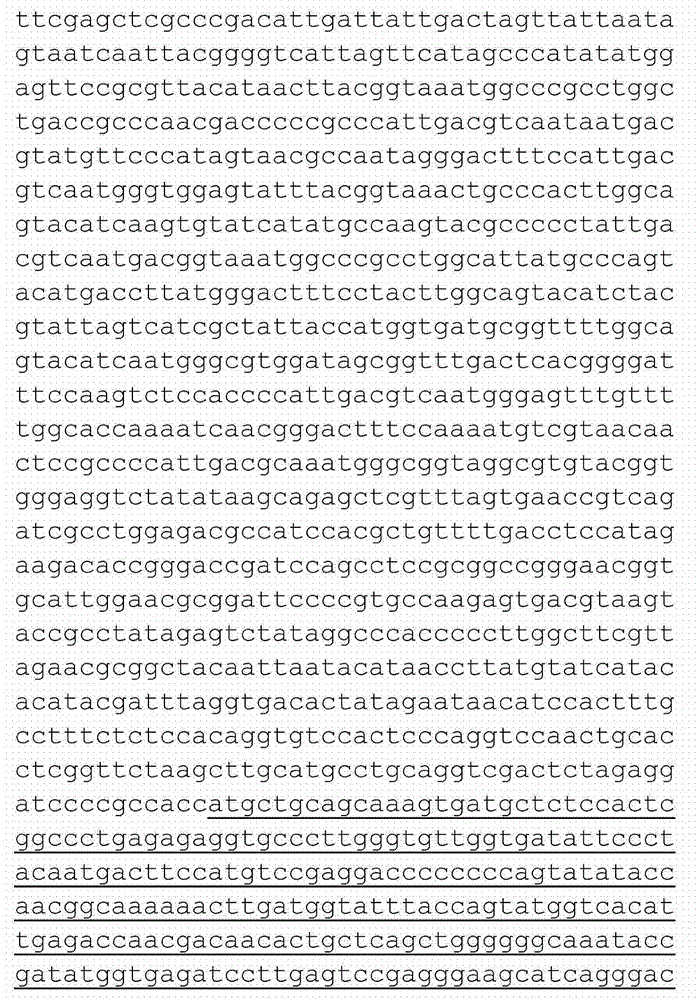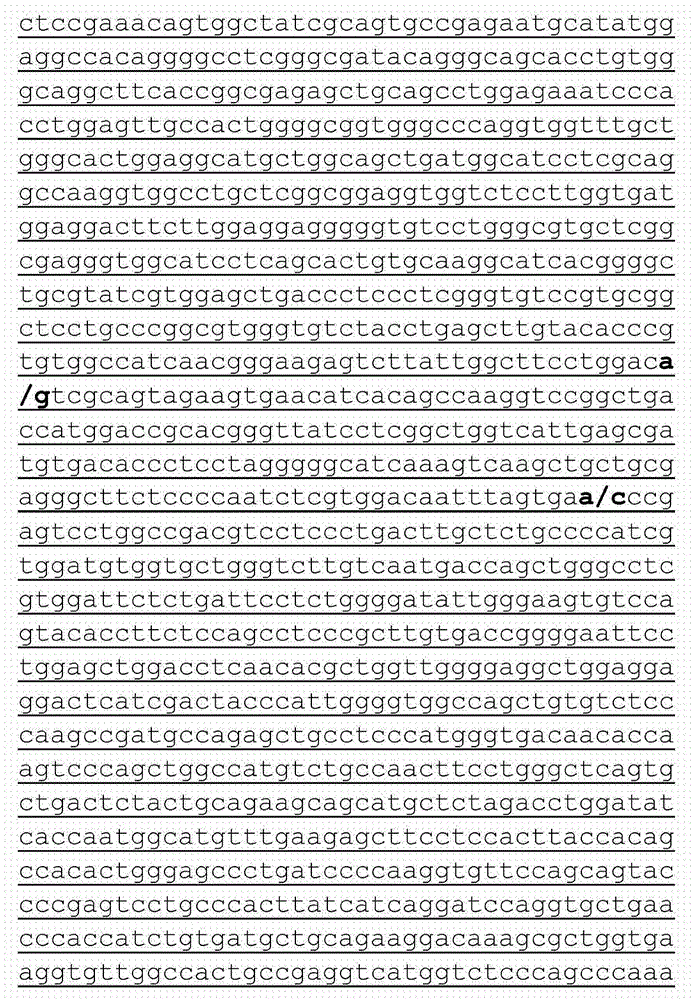Variant of BPIFB4 protein
A protein variant and protein technology, applied in the field of BPIFB4 protein variants, can solve problems such as loss of protein activity
- Summary
- Abstract
- Description
- Claims
- Application Information
AI Technical Summary
Problems solved by technology
Method used
Image
Examples
Embodiment 1
[0058] Example 1: Identification of the VTFThBPIFB4 protein in three independent populations
[0059] A recently published Genome Wide Association Study (GWAS) of Southern Italian Centenarians (SIC) has identified several genetic variants associated with longevity in individuals (Malovini et al., Rejuvenation Research 2011; 14(3), pp. 283-291).
[0060] To confirm the first 4 changes reported in this study (p-4 ), replicated in the first replication cohort recruited for the German Centenary Study (Keidorp et al; Aging Cell 2011; Vol. 10, pp. 622-8), The first replicate cohort comprised 1447 long-lived individuals (LLI) (age range 95 to 110 years, mean age 98.8 years) and 1029 younger controls (age range 60 to 75 years, mean age was 66.8 years). As a result, two non-synonymous single-nucleotide polymorphisms (single-nucleotide polymorphism, SNP) rs2070325 and rs571391 and two intron markers rs7583529 and rs285097 have been tested by Taqman analysis, the two intron Markers ...
Embodiment 2
[0072] Example 2: Haplotyping of the BPIFB4 locus
[0073] Haplotype analysis revealed a strong linkage disequilibrium (LD) pattern in the BPIFB4 genomic locus, which defined regions highly enriched in non-synonymous SNPs (Fig. S1 in the Supplementary Appendix). The rs2070325 variant (Ile229Val) of BPIFB4 tags rs2889732 (Asn288Thr), rs11699009 (Leu488Phe) and rs11696307 (Ile494Thr).
[0074] Through homology modeling with the I-TASSER program (REF: Ambrish Roy, Alper Kucukural, Yang Zhang. I-TASSER: a unified platform for automated protein structure and function prediction. Nature Protocols, Vol. 5, 725-738 (2010) .) and used the protein BPI (code 1EWF) from the PDB as a template to predict the three-dimensional structure of human BPIFB4. All models were considered in the visual structure analysis with the program PyMOL version 1.2r3pre, LLC (Molecular Graphics System) to carry out. The above analysis revealed that both Ile268Val and Asn320Thr are located at putative pro...
Embodiment 3
[0076] Example 3: Reactivity of isolated blood vessels to INFT hBPIFB4 and VTFT hBPIFB4
[0077] To determine the effect of the specific BPIFB4 variants identified on vascular function, we studied ex vivo transfection with pRK5 vectors encoding VTFT hBPIFB4 or proteins that differ from VTFT hBPIFB4 in that they exhibit multiple substitutions for four relevant amino acids. The effect of transfecting mouse mesenteric blood vessels, the protein is: INFT hBPIFB4 having the amino acid sequence of SEQ ID NO: 3, which differs from VTFT hBPIFB4 in that it contains isoleucine at positions 229 and 281 and Asparagine; VNFT hBPIFB4 having the amino acid sequence of SEQ ID NO: 4, which differs from VTFT hBPIFB4 in that it contains asparagine at position 281; ITFT hBPIFB4 having the amino acid sequence of SEQ ID NO: 5, which differs from VTFT hBPIFB4 VTFT hBPIFB4 differs in that it contains isoleucine at position 229; VTLI hBPIFB4 having the amino acid sequence of SEQ ID NO: 6 differs fro...
PUM
 Login to View More
Login to View More Abstract
Description
Claims
Application Information
 Login to View More
Login to View More - R&D
- Intellectual Property
- Life Sciences
- Materials
- Tech Scout
- Unparalleled Data Quality
- Higher Quality Content
- 60% Fewer Hallucinations
Browse by: Latest US Patents, China's latest patents, Technical Efficacy Thesaurus, Application Domain, Technology Topic, Popular Technical Reports.
© 2025 PatSnap. All rights reserved.Legal|Privacy policy|Modern Slavery Act Transparency Statement|Sitemap|About US| Contact US: help@patsnap.com



